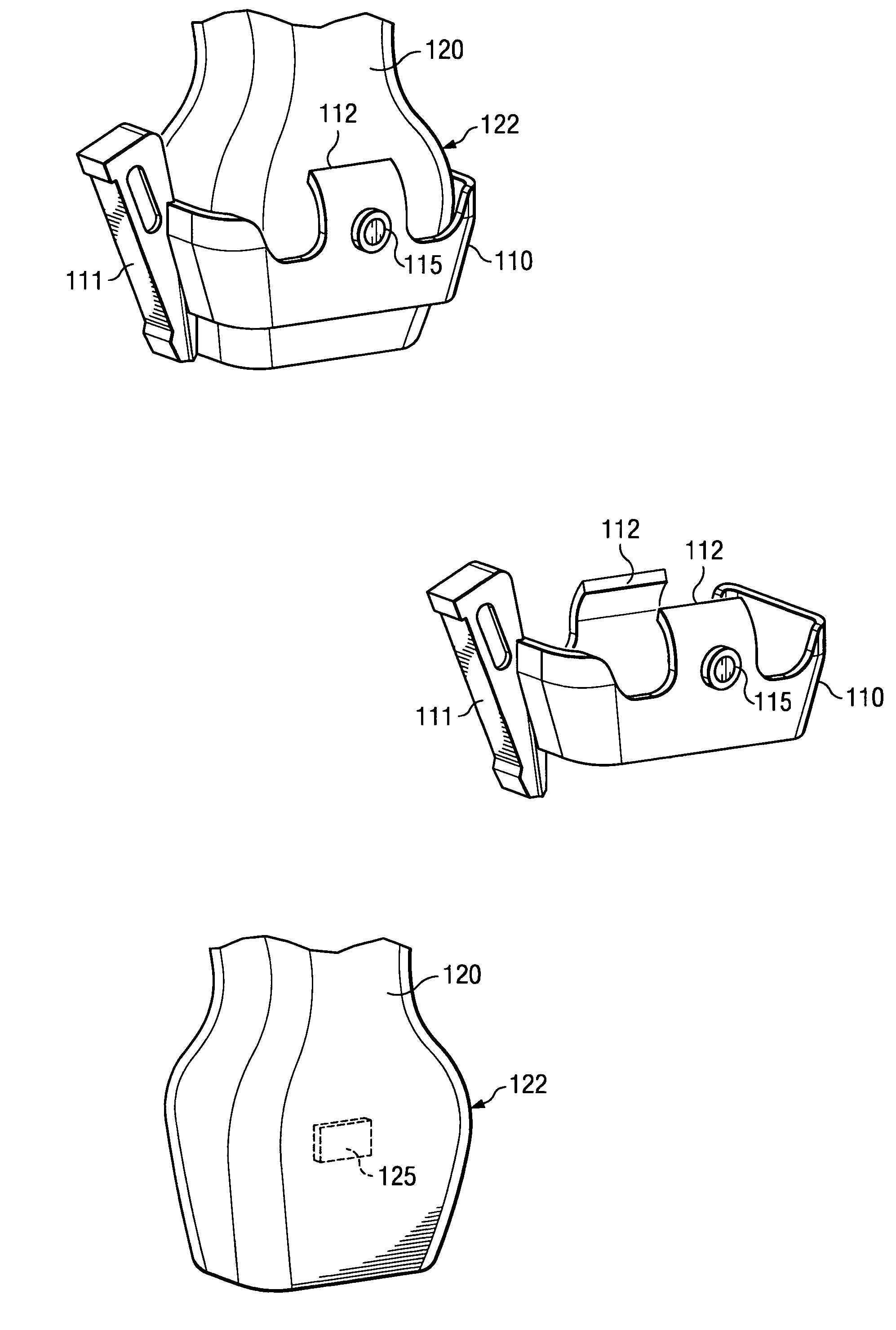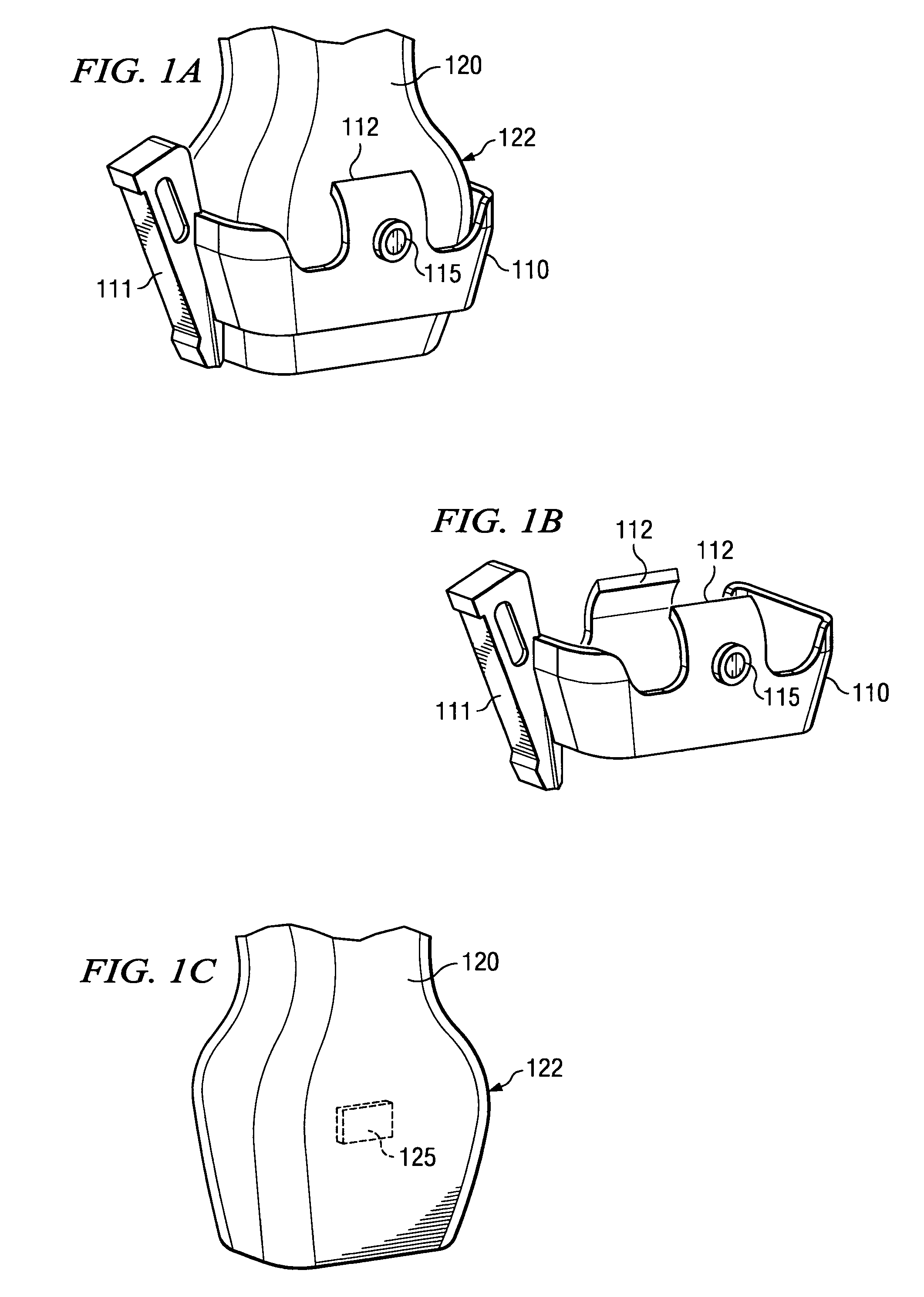Medical device guide locator
a technology for medical devices and locators, applied in tomography, ultrasonic/sonic/infrasonic diagnostics, applications, etc., can solve problems such as unneeded guides, unsuitable guides appended to ultrasound transducers, and unsuitable placement of medical devices
- Summary
- Abstract
- Description
- Claims
- Application Information
AI Technical Summary
Benefits of technology
Problems solved by technology
Method used
Image
Examples
Embodiment Construction
[0018]FIGS. 1A-1C show a device used in medical procedures and a corresponding medical device guide bracket adapted according to an embodiment of the present invention. Specifically, FIGS. 1A-1C illustrate an embodiment wherein medical device guide bracket 110, shown here as a biopsy needle guide bracket, and assembly 120, shown here as an ultrasound transducer assembly 120, are adapted to provide feedback with respect to the desired or proper placement of medical device guide 111 disposed on medical device guide bracket 110 without introducing protuberances or other structure to the surface of assembly 120.
[0019] It should be appreciated that, although the illustrated embodiment shows a biopsy needle guide and ultrasound transducer, embodiments of the present invention may be utilized with respect to any number of medical devices. For example, embodiments of the present invention may be utilized with respect to needles, catheters, drills, saws, scalpels, stints, and / or the like. L...
PUM
 Login to View More
Login to View More Abstract
Description
Claims
Application Information
 Login to View More
Login to View More - R&D
- Intellectual Property
- Life Sciences
- Materials
- Tech Scout
- Unparalleled Data Quality
- Higher Quality Content
- 60% Fewer Hallucinations
Browse by: Latest US Patents, China's latest patents, Technical Efficacy Thesaurus, Application Domain, Technology Topic, Popular Technical Reports.
© 2025 PatSnap. All rights reserved.Legal|Privacy policy|Modern Slavery Act Transparency Statement|Sitemap|About US| Contact US: help@patsnap.com



